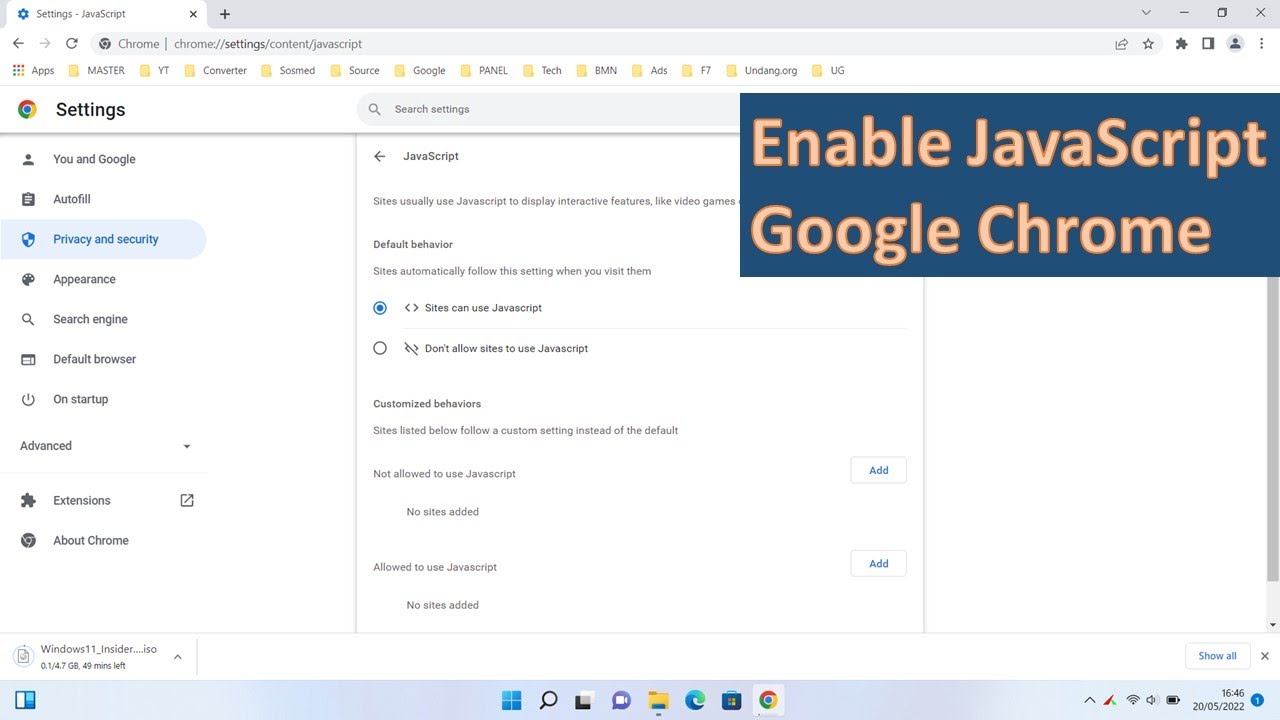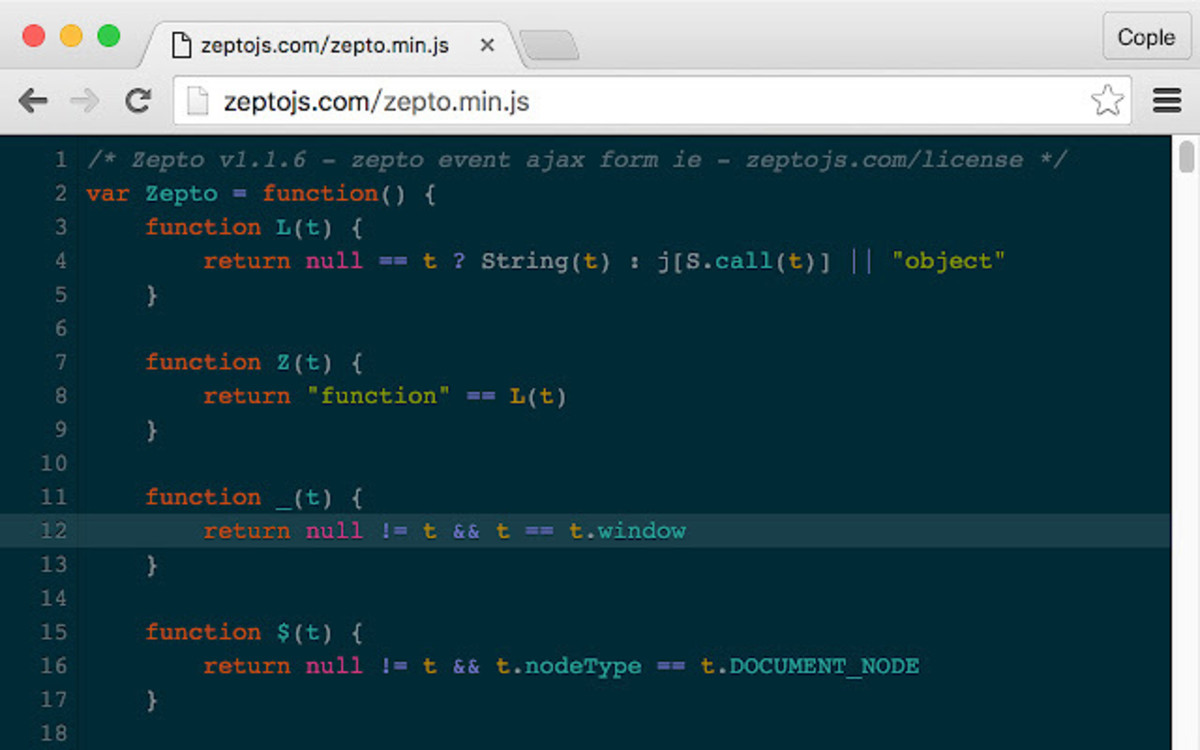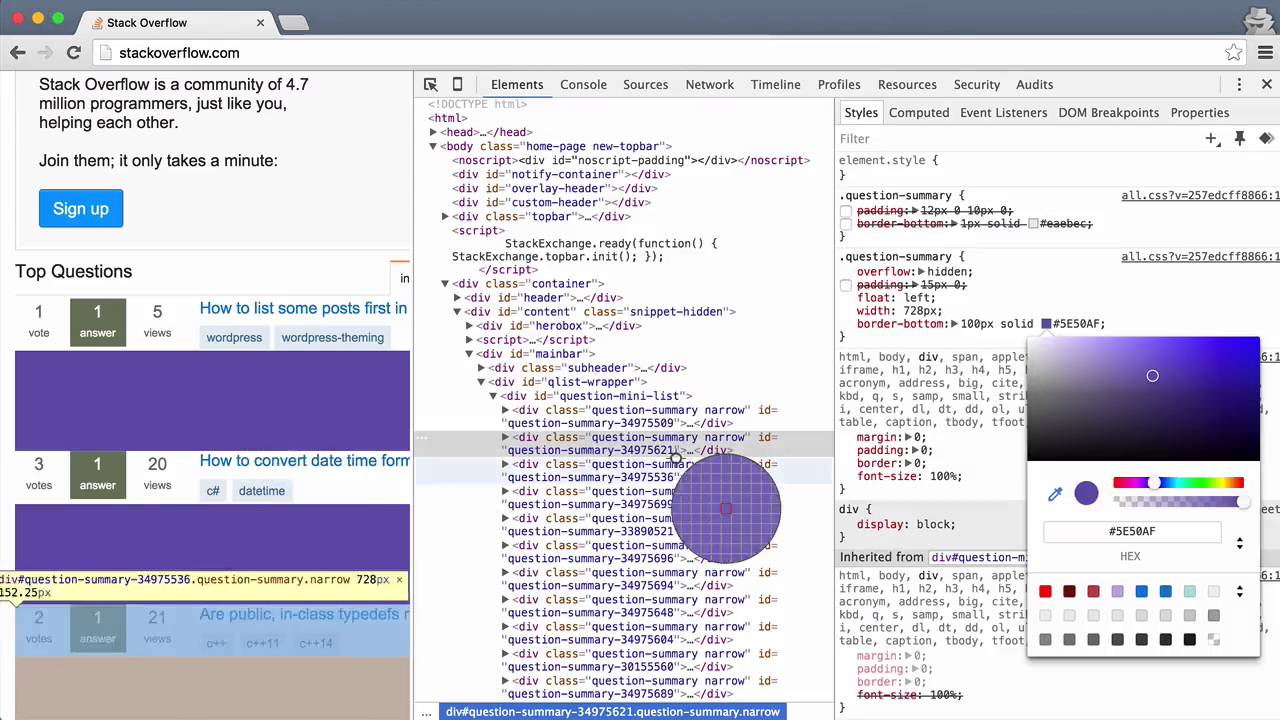Introduction
Updating JavaScript on Chrome is essential for ensuring a seamless browsing experience and accessing the latest web features. JavaScript serves as the backbone of interactive web applications, enabling dynamic content, form validation, and enhanced user experiences. As web technologies continue to evolve, keeping JavaScript up to date is crucial for security, performance, and compatibility with modern websites and web applications.
In this article, we will explore the process of updating JavaScript on Chrome, a popular web browser known for its speed, stability, and extensive range of extensions. By following the steps outlined here, you can ensure that your Chrome browser is equipped with the latest JavaScript capabilities, allowing you to enjoy the full potential of web-based content and applications.
Whether you are a casual internet user, a web developer, or a business professional relying on web-based tools, understanding how to update JavaScript on Chrome empowers you to stay current with the ever-changing landscape of web technologies. With the rapid advancements in web development and the increasing complexity of web applications, having an updated JavaScript engine within your Chrome browser is fundamental for a secure, efficient, and enjoyable browsing experience.
Now, let's delve into the process of checking the current version of Chrome to determine if an update is needed, followed by the steps to update Chrome to the latest version and enable JavaScript to ensure optimal functionality. Finally, we will verify the updated JavaScript settings on Chrome, allowing you to confidently navigate the web with enhanced security and performance.
Checking the current version of Chrome
Before proceeding with updating JavaScript on Chrome, it's crucial to verify the current version of the browser. This ensures that you are aware of the existing state of your Chrome installation and can determine if an update is required. Checking the version of Chrome is a straightforward process that can be accomplished in just a few simple steps.
-
Open Chrome Browser: Launch the Chrome browser on your computer by clicking on the Chrome icon in the taskbar or desktop. Alternatively, you can search for Chrome in the Start menu or applications folder and open it from there.
-
Access the Menu: Once Chrome is open, look for the three vertical dots located in the top-right corner of the browser window. Click on these dots to open the Chrome menu.
-
Navigate to Settings: From the Chrome menu, navigate to the "Settings" option and click on it. This will open the Settings tab in a new browser window.
-
View Chrome Version: In the Settings tab, scroll down and click on the "About Chrome" option. This will display the current version of Chrome installed on your computer. The version number is typically displayed at the top of the page, along with information about the update status.
-
Check for Updates: Chrome automatically checks for updates when you access the About Chrome section. If an update is available, Chrome will initiate the download and installation process. If no update is available, the page will indicate that Chrome is up to date.
By following these steps, you can easily determine the current version of Chrome installed on your computer. This information is essential for ensuring that your browser is equipped with the latest features, security patches, and JavaScript updates. Once you have confirmed the current version of Chrome, you can proceed to the next step of updating the browser to the latest version, ensuring that you have access to the most recent JavaScript capabilities for an optimized browsing experience.
Updating Chrome to the latest version
Ensuring that your Chrome browser is running the latest version is crucial for maintaining optimal performance, security, and compatibility with modern web technologies, including JavaScript. Updating Chrome to the latest version is a straightforward process that can be accomplished in just a few simple steps.
-
Open Chrome Browser: Launch the Chrome browser on your computer by clicking on the Chrome icon in the taskbar or desktop. Alternatively, you can search for Chrome in the Start menu or applications folder and open it from there.
-
Access the Menu: Once Chrome is open, look for the three vertical dots located in the top-right corner of the browser window. Click on these dots to open the Chrome menu.
-
Navigate to Settings: From the Chrome menu, navigate to the "Settings" option and click on it. This will open the Settings tab in a new browser window.
-
Check for Updates: In the Settings tab, locate and click on the "About Chrome" option. This will trigger Chrome to check for updates. If an update is available, Chrome will automatically download and install the latest version. If no update is available, the page will indicate that Chrome is up to date.
-
Relaunch Chrome: After the update is installed, Chrome will prompt you to relaunch the browser to apply the changes. Click on the "Relaunch" button to restart Chrome with the latest version.
By following these steps, you can ensure that your Chrome browser is updated to the latest version, equipped with the newest features, security enhancements, and JavaScript updates. Keeping Chrome up to date is essential for safeguarding against potential security vulnerabilities and ensuring compatibility with the latest web applications and services.
Once you have successfully updated Chrome to the latest version, you are ready to proceed with enabling JavaScript to unlock its full potential within the browser. The next section will guide you through the process of enabling JavaScript on Chrome, allowing you to harness the power of dynamic web content and interactive applications with confidence.
Enabling JavaScript on Chrome
Enabling JavaScript on Chrome is a fundamental step in harnessing the full potential of dynamic web content, interactive applications, and modern web technologies. JavaScript serves as the backbone of web interactivity, allowing websites to deliver engaging user experiences, dynamic content updates, form validation, and seamless functionality. By enabling JavaScript within the Chrome browser, you ensure that you can fully experience the interactive elements of web pages and access the latest web-based applications.
To enable JavaScript on Chrome, follow these simple steps:
-
Access Chrome Settings: Open the Chrome browser on your computer and click on the three vertical dots in the top-right corner to access the Chrome menu. From the menu, select "Settings" to open the Settings tab in a new browser window.
-
Navigate to Site Settings: In the Settings tab, scroll down and click on "Privacy and security" in the left-hand menu. Then, click on "Site settings" to access the site-specific settings for Chrome.
-
Enable JavaScript: Within the Site settings, locate and click on "JavaScript" to access the JavaScript settings. Toggle the switch to enable JavaScript, allowing websites to execute JavaScript code and deliver dynamic content and interactive features.
-
Verify JavaScript Status: After enabling JavaScript, you can verify its status by visiting a website that utilizes JavaScript, such as a news website with dynamic content or an interactive web application. If JavaScript is enabled, you will experience the full functionality of the website or application, including interactive elements, dynamic updates, and form validation.
By following these steps, you can easily enable JavaScript on Chrome, unlocking the full potential of web interactivity and dynamic content. With JavaScript enabled, you can confidently navigate the web, access modern web applications, and enjoy seamless user experiences on a wide range of websites.
Once JavaScript is enabled, you have successfully ensured that your Chrome browser is equipped to handle the latest web technologies and deliver an optimized browsing experience. With JavaScript enabled and Chrome updated to the latest version, you are ready to explore the dynamic and interactive elements of the web with enhanced security, performance, and compatibility.
Verifying the updated JavaScript on Chrome
After updating Chrome to the latest version and enabling JavaScript, it's essential to verify that the updated JavaScript settings are functioning as intended. Verifying the updated JavaScript on Chrome ensures that you can confidently experience the full range of interactive web content, dynamic applications, and modern web technologies. By confirming the successful update and activation of JavaScript, you can navigate the web with enhanced security, performance, and compatibility.
To verify the updated JavaScript on Chrome, follow these steps:
-
Access a JavaScript-Enabled Website: Open the Chrome browser and visit a website known for its use of JavaScript, such as a news website with dynamic content, an interactive web application, or an online productivity tool. By accessing a JavaScript-enabled website, you can experience the interactive elements and dynamic functionality that JavaScript enables.
-
Interact with Dynamic Content: Upon visiting a JavaScript-enabled website, interact with the dynamic content and features it offers. This may include interactive forms, real-time updates, animated elements, or responsive user interfaces. By engaging with the website's dynamic content, you can confirm that JavaScript is functioning as expected within the Chrome browser.
-
Verify Form Validation: If the website includes forms for inputting data, such as login forms, search bars, or submission fields, verify that form validation and input feedback are functioning correctly. JavaScript plays a crucial role in form validation, ensuring that user input is processed accurately and that feedback is provided in real time. By testing form validation, you can confirm that JavaScript is actively contributing to the website's functionality.
-
Check for Interactive Features: Explore the website for interactive features that rely on JavaScript, such as image sliders, interactive maps, collapsible menus, or dynamic content updates. By interacting with these features, you can confirm that JavaScript is facilitating the interactive elements of the website, enhancing user engagement and interactivity.
-
Observe Console Logs (Optional): For more advanced users and developers, accessing the browser's developer tools and observing the console logs can provide insights into JavaScript execution, potential errors, and performance optimizations. While this step is optional for general users, it can offer valuable information for those interested in the technical aspects of JavaScript execution within the browser.
By following these steps to verify the updated JavaScript on Chrome, you can ensure that the browser is effectively utilizing JavaScript to deliver dynamic, interactive, and engaging web experiences. With JavaScript functioning optimally, you can confidently explore a wide range of websites, web applications, and online services, knowing that Chrome is equipped with the latest JavaScript capabilities.
Verifying the updated JavaScript on Chrome is a crucial step in confirming that the browser is ready to handle the dynamic and interactive elements of modern web content. By ensuring that JavaScript is functioning as intended, you can navigate the web with confidence, knowing that your browsing experience is optimized for security, performance, and interactivity.

























